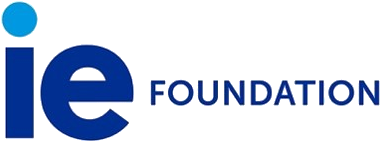Compliance programs in a new business narrative: reflections on ethics, corporate identity, and program effectiveness
October 13, 2022 Uncategorized

Compliance programs require a change of approach and perspective to add value, contribute to better management, and positively impact the organization and society.
Article written by Esperanza Hernández-Cuadra Academic Head, Institute of Compliance Studies, Spanish Compliance Association (ASCOM), Adjunct Professor at IE University (Compliance Executive Programs)
What does it mean for a firm to “act ethically”?
Let’s imagine we have overcome the limitations of an exclusively legalistic and corporate defense approach to compliance programs and have instead started out from the idea that companies are also moral agents. In this case, the ultimate purpose of these programs and their effectiveness lies in their ability to prevent the behaviors that the company has identified as unethical and promote ethical behaviors.
Leadership and management play a major role in any meaningful behavioral influence in a firm, which is why compliance programs must start from the top. Therefore, it is crucial for the organization to previously agree on what is considered ethical behavior, in conjunction with its leaders. In other words, there is a need to agree on what the moral identity of the company is. This exercise will undoubtedly be conditioned by the moral identity and motivation of its top managers and how these are conveyed to the rest of the organization.
Acting ethically involves following generally accepted moral standards. These standards include complying with the law and behaving according to specific universal values and moral principles, taking the different ethical theories that nurture moral philosophy as a reference. We should not forget that ethics means a rational approach to morality and implies a process of reflection involving applying objective references and universal principles. It should, therefore, never be confused with the emission of spontaneous moral judgments.
The limitations of laws and regulations, particularly in the new business narrative
If we are constrained to the idea that a company should only care about compliance in terms of laws and regulations, we are distorting a process of reflection that involves a genuine search to do the right thing. This search cannot be separated from a new way of conceiving companies and the paradigm shift that this represents. There is a new narrative about creating value for all stakeholders and not only short-term economic profits for shareholders. This shift implies moving from management for shareholders to management for stakeholders. According to Edward Freeman , stakeholders should be considered as a whole, as their interests are interwoven. Furthermore, the bond generated with them must be seen not as a mere transaction but as a relationship based on trust and mutual care.
This new narrative also requires a shift in what behavior should be expected and the scope of the risks to be managed. It is no longer a question of measuring risks solely because of the negative impact they can have on the company. The potential harm caused to the different stakeholders must also be considered and evaluated.
In this context, compliance programs require a change of approach and perspective to add value, contribute to better management, and positively impact the organization and society (for example, effectively fighting corruption and contributing to other Sustainable Development Goal targets).
An exclusively legal approach to preventing and promoting good business conduct poses some limitations in terms of a guiding behavior within companies. First, as moral agents, firms’ actions can be morally questioned by their stakeholders, and sometimes what is legal is not morally acceptable. Moreover, the focus is sometimes only put on the letter and not on the spirit of the law. Furthermore, laws always trail behind reality. The process involved in drawing them up and bringing them into force makes it difficult for laws to adapt to reality quickly. Finally, the complex nature of legal norms means they do not provide easy answers and guidance to every business management decision.
When the moral identity of the company is conspicuous by its absence
An organization’s moral traits and qualities define what the organization is and where it directs its actions, thus creating its moral identity. Consequently, for a company to identify and define what “ethical behavior” means, it must first reflect on the extent to which morality (distinguishing between good and evil, virtue and vice, right and wrong) is part of its corporate identity and what attributes make it different from other organizations. For example, most business scandals reveal the apparent disregard of their companies’ leaders for the moral character of their actions and decisions. Cases like Enron and Theranos are just a couple of examples.
When firms do not search for coherence between their actions and decisions and their principles and moral values, they can end up developing compliance programs that are purely formal and cosmetic. This idea is consistent with empirical research findings connecting top management’s lack of commitment to ethics and an exclusive concern for external legitimacy or financial results with a tendency to decouple compliance programs from the organization’s routines and activities. In short, these companies confuse an “image of virtue with the authentic practice of virtue” .
An organization’s ethics is the mortar that consolidates and reinforces its character and the pride and sense of belonging of those who are part of it. Employees can exhibit outstanding ethical conduct when they feel they are part and parcel of an organization that respects and practices these high standards and cultivates a genuine interest in benefiting society, as opposed to solely driving the company’s short-term financial results. Compliance programs can be an excellent opportunity to achieve this.
However, creating compliance programs in companies that lack a moral identity and whose managers only make decisions based on the fear of punishment or achieving a competitive advantage is like sowing seeds in barren soil.
A few recommendations on what to do and what not to do (for a compliance program to positively influence behaviors and decisions)
Ethics is part and parcel of the concept of business. As Muel Kaptein and Johan Wempe pointed out, “the business of business is ethical business.” Consequently, a compliance program that pursues ethical conduct must have an ethical approach.
I have included a few recommendations (or reflections) below for firms that genuinely believe in the moral value of compliance programs.
- Managers should exemplify their compliance program’s content daily.
- There must be proper understanding of what motivates employees’ behaviors in the first place. Once we understand the problem, it is easier to design an effective solution.
- The creation of a psychological safety climate where employees can speak the truth to power is essential.
- Ways must be found to let employees participate in creating the code of ethics and critical compliance policies and procedures. This will contribute to workers taking them on board as though they were their own and understanding their purpose and meaning.
- There must be a focus on education, training, and awareness, together with role modeling. This is the best way to communicate and clearly explain the firm’s behavioral expectations (much better than sporadic internal communication campaigns). Encouraging moral imagination is critical to discern and evaluate the different options to resolve an ethical issue, which are often not only determined by the set of rules and norms established a priori by the organization.
- The compliance program must not be used to indoctrinate employees morally, for example, if an intrusion into freedom of thought or personal life is perceived, this will harm commitment and collaboration.
- Care must be taken so as not to focus excessively on a coercive approach. Remember that instilling intrinsic motivation leads to much more effective performance than external coercion.
Conclusion
Effective compliance programs must demonstrate that organizational efforts to “do the right things in the right way” are not just mere window-dressing. There must be coherence between words and actions. Otherwise, companies will not play fairly. They should not use the program only for instrumental reasons but because they are genuinely committed to ethics (which includes complying with laws and regulations) and wish to contribute to raising the moral conscience of managers and employees and their ability to identify ethical issues. This is the only way to talk about compliance programs that genuinely contribute to sustainability in the broadest sense of the word.



